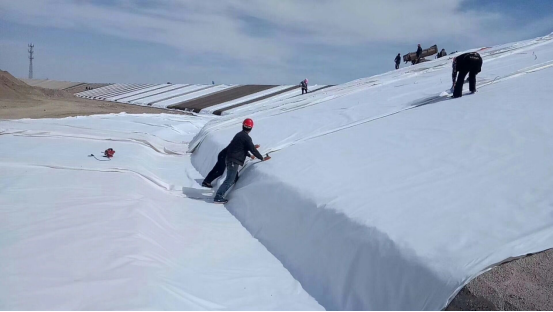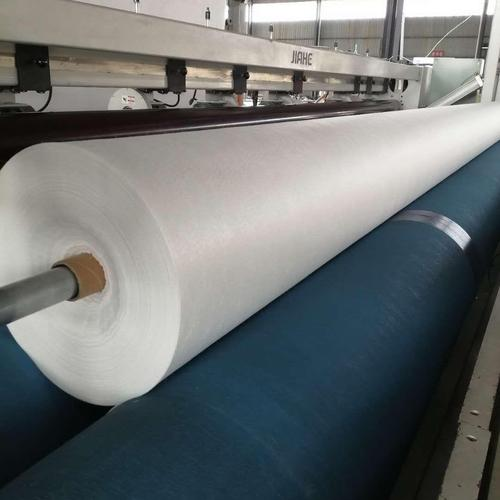Under heavy rainfall conditions, the geotextile slope protection structure can effectively exert its protective effect. In areas where the geotextile is not covered, the main particles scatter and fly, forming some potholes; In the area covered by geotextile, raindrops hit the geotextile, dispersing the pressure and greatly reducing the impact force on the slope soil. After petal erosion, the infiltration capacity of the royal body gradually decreases, and slope runoff subsequently forms. Runoff is formed between geotextiles, and the runoff is dispersed through the geotextile, causing rainwater to flow down in a laminar state. Due to the effect of geotextiles, the grooves formed by runoff are difficult to connect, with a small number of grooves and slow development of grooves. The erosion of fine grooves is slightly irregular and difficult to form. Soil erosion is greatly reduced compared to bare slopes, with soil particles converging on the upper side of the geotextile and blocking grooves and some potholes upstream.
Under heavy rainfall conditions, geotextile raised structures can effectively protect slopes, and as a whole, geotextile can cover the raised structures. When rainfall hits the geotextile, it can effectively protect the raised structures and reduce the impact on them. In the early stage of rainfall, the far slope of the protruding structure absorbs less water; In the later stage of rainfall, the protruding structure slope absorbs more water. After erosion, the infiltration capacity of the soil gradually decreases, and slope runoff subsequently forms. Runoff is formed between geotextiles, and the flow through the raised structure is blocked, resulting in a slower flow rate. At the same time, soil particles accumulate in the upper part of the raised structure, and the water flow is dispersed by the geotextile, causing the runoff to flow in a laminar state. Due to the presence of protruding structures, the grooves formed by runoff are difficult to connect, with a small number of grooves and slow development. The erosion of fine grooves has slightly developed and cannot be formed.
Soil erosion is greatly reduced compared to bare slopes, with particles converging on the upper side of protruding structures and blocking the grooves and some potholes upstream. Its protective effect is quite excellent. Due to the blocking effect of protruding structures on soil particles, the protective effect is more pronounced than non protruding structures.
In the process of geotextile construction, in order to improve the quality of engineering construction and ensure the good performance of geotextiles, the following issues should be paid attention to. Firstly, prevent geotextiles from being damaged by stones. Due to the cloth like nature of geotextiles, when laid on gravel, they are easily cut by sharp stones during contact with these gravel, which hinders the effective utilization of their filtering and tensile capabilities, thus losing their value for existence. In concrete construction, it is necessary to lay a layer of fine sand at the bottom of the geotextile or carry out appropriate cleaning work in order to play a good preventive and protective role. Secondly, the tensile performance of woven geotextiles is generally stronger in the longitudinal direction than in the transverse direction, with a width between 4-6 meters. They need to be spliced during riverbank construction, which can easily lead to weak areas and external damage. Once geotextiles encounter problems, there is no good way to effectively maintain them. Therefore, in concrete construction, attention must be paid to gradually increasing the riverbank to prevent cracking during laying. Finally, during the foundation construction process, the load weight should be gradually increased and the stress on both sides should be kept as uniform as possible. On the one hand, it can prevent damage or sliding of geotextiles, and on the other hand, it can improve the drainage function of the entire project, making the foundation more stable.
Post time: May-29-2024



